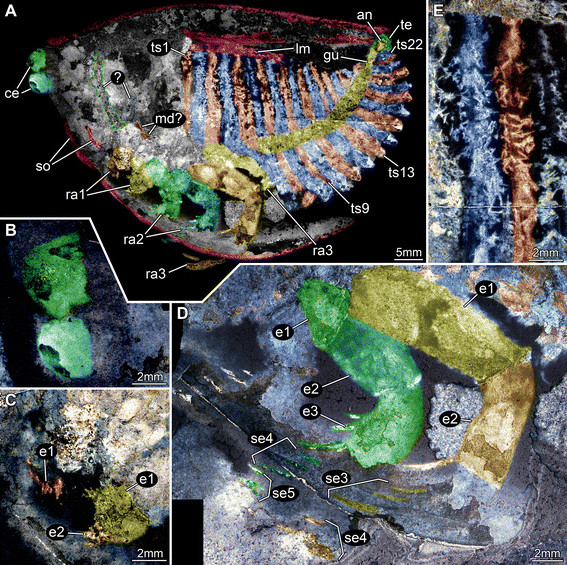Eating Disorders and Breastfeeding• Infection in Fitz-Hugh-Curtis Syndrome • Mind control in zombie ants • Climate change and dengue fever risk in Europe •Contaminated feed spreading a virus through US pigs •Dietary acid load and risk of chronic kidney disease • Bovine TB trace back surveillance

Pregnancy and childcare: Eating Disorders and Breastfeeding
Perinatal eating disorders affect 5 to 7% of mothers and this number may be an under-evaluation of the cohort. A number of studies have identified links between reproductive mothers with current or past issues of eating disorder and infant feeding problems. The determinants of these links include genetic influences, children’s temperament and appetite, parental eating psychopathology, affective psychopathology and learnt behaviors. By observing the interaction of mothers suffering from eating disorders with their children, a recent study has identified specific ‘difficult interactive patterns’, compared to those observed with mothers who do not have eating disorders. These findings provide greater insight into the specific behavioral experiences of mothers with eating disorders.
Women’s health: Infection in Fitz-Hugh-Curtis Syndrome
Fitz-Hugh-Curtis syndrome is a disease which affects the spaces within the liver capsule (a collagenous surface which surrounds the liver) and adhesions between the liver capsule and anterior abdominal wall. The disease is rare and difficult to spot, as it mimics a wide range of other diseases. It is typically caused by the sexually transmitted pathogens Chlamydia trachomatis and Neisseria gonorrhoeae. In a study published in BMC Women’s Health the first instance of Fitz-Hugh-Curtis syndrome caused by nontuberculous mycobacterial infection was recently reported. The identity of the causative pathogen was made by a PCR approach.
Image of the month

Identification of the segmental musculature of the Silurian thylacocephalanThylacaresbrandonensis. From The implications of a Silurian and other thylacocephalan crustaceans for the functional morphology and systematic affinities of the group. Haug et al. BMC Evolutionary Biology 2014, 14:159 Click here for a blog entry on the topic
Evolutionary Biology: Mind control in zombie ants
The parasitic fungi Ophiocordyceps have the startlingly unique ability to control the behaviour of ants, creating the oft discussed “zombie ant”. The fungi infest ant brains, provoking stark changes to the behaviour of the ants. Infected ants exhibit climbing behaviour followed by mandibular lockjaw permanently attaching the ant to a high point. This is advantageous to the fungi as it provides an elevated platform for sporulation. Interestingly, whilst the fungi can potentially infect a large range of ant species but only seem to infect a small range of ant species in the wild. Using ex-vivo culture methods it has been revealed Ophiocordyceps secretes a different metabolic profile in response to the species of ant brain environment it inhabits. Find out more about this study by visiting BMC Evolutionary Biology
Public Health: Climate change and dengue fever risk in Europe
Vector borne diseases are directly linked with changes in average temperature; as such climate change has been identified as a future risk factor for disease prevalence. Dengue fever is caused by transmission of flaviviruses, mediated by mosquitos. The incidence of dengue fever in Europe at present is low; however changes to global weather patterns may have an effect on this. Using a Generalized Additive Model, a report recently published in BMC Public Health has identified a number of regions at highest risk of increased home-grown dengue incidence. For expanded coverage on this study, visit the BMC Series blog
Veterinary research: Contaminated feed spreading a virus through US pigs
Since its initial detection in May 2013, porcine epidemic diarrhea virus (PEDV) has spread rapidly throughout the United States swine industry. Initially, contaminated feed was proposed as a risk factor for PEDV; however, data were not available to support this theory. A novel means of sampling at-risk feed material under controlled field conditions was used and tested using a swine bioassay to demonstrate transmission under controlled experimental conditions. PEDV RNA was detected in complete feed material, and proved its infectivity, after researchers were able to infect pigs using feed containing PEDV. These data provide the initial proof of concept that contaminated complete feed can serve as a vehicle for PEDV infection of naive pigs.
Nephrology: Dietary acid load and risk of chronic kidney disease
This study assesses the relationship of dietary renal acid load with markers of CKD in a large, representative population, and also examines the association of socio-demographic characteristics, such as age, financial status, and race. The key finding of this work suggests that high dietary acid load is associated with greater risk of markers of CKD. The findings have important implications, in that, if they are corroborated, altering diets may provide an adjunct approach to other strategies for treatment of CKD.
Veterinary Research: Bovine TB trace back surveillance
For the period 2001–2010 Federal and State animal United States health officials were able to trace some domestic bovine tuberculosis (TB) cases identified at slaughter back to their herd of origin; however, sufficient gaps exist in the current bovine TB surveillance that impair the ability for officials to trace all domestic bovine TB cases. The low proportion of successful trace back investigations found in this study is an impediment to the goal of eradication in the United States. In order for slaughter surveillance to be an effective tool to eradicate bovine TB, it is crucial that all of the bovine TB cases detected at slaughter are successfully traced to their herd of origin and to all other exposed herds in order to maximize the detection of TB infected herds, thus preventing sources of infection from remaining undetected in the national herd.
![]() Follow @BMC_series
Follow @BMC_series
![]() Watch our YouTube channel
Watch our YouTube channel
![]() Browse our list of journals
Browse our list of journals
![]() Subscribe to updates from the blog
Subscribe to updates from the blog
Comments